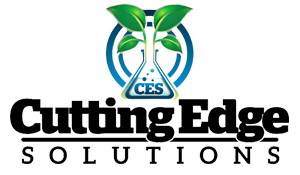
There are many methods being proposed and employed today to replenish nutrients stripped from the soil by long-term gardening and farming. A few of these methods include chemical fertilizers, composting, and even bioengineering non-legume plant species to enable them to fix nitrogen into the soil the way legume crops do. Each method has its own set of pros and cons that make it more or less feasible. As perhaps one of the more viable means for soil nutrient replacement, vermiculture offers a host of benefits without many of the drawbacks seen in other methods.
Vermiculture, or vermicomposting, is the process of composting organic waste using earthworms such as red wigglers and white worms. These composting worms feed on a broad spectrum of organic waste and produce vermicast – also known as worm castings, worm humus or worm manure.
Vermicast also contains worm mucous, which helps to keep soil nutrients from washing away with the first watering as well as improving moisture retention. The nutrients found in vermicast are more readily accessible to plants because it is rich in microbial life – about 10 to 20 times greater than in pre-digested soil and organic material. Worms also enrich soil by stabilizing soil pH and adding various enzymes, such as including cellulose and phosphatase, as well as plant hormones like auxins and gibberellic acid, all of which enhances plant grown, germination and greater crop yields, as well as improved root structure and growth. Worms have a calcific gland that coats the castings with calcium to help time release the nutrient at the rate that the plant needs it.
One reason vermiculture is becoming more popular is because it is a system of composting which can easily be done at home with very little overhead. Composting earthworms can be ordered through online outlets, nursery stores, fishing stores, which keep them for fish bait, or they could be collected directly from manure and compost piles. Bins can either be purchased or built at home out of various materials such as wood, metal and plastic, though plastic bins are recommended since they are inert and do not rot. Providing food for the worms to compost is not only easy since there is very little biological material they cannot eat, it’s also a convenient way to dispose of kitchen scraps – anything from coffee grounds and tea bags to grass clippings, egg shells and fruit rinds.
However, though making vermicompost at home may be cheap and easy, it can sometimes be tricky to create compost that has the right balance. Because pH, microbial life and nutrients varies according to the food stock fed to the worms it’s important to provide a good blend of organic material in order to achieve the full benefits of vermiculture. SunRay’s Harvest carries one of the purest and pH stable forms of castings due to over 30 years of vermi-technology research. They are known for their VermaPlex spray, which is the liquid version of their Pure Black Castings that promotes vigorous plant Growth, Flowering, Brix & Abundant Yields during all phases of growth. These product have been used all around the world and have won several awards due to it’s outstanding performance, yet they’re still new to the Hydroponic Industry and haven’t received as much recognition as they deserve.





















 © 2017
© 2017
Recent Reviews